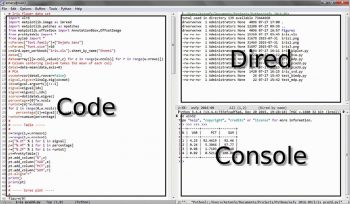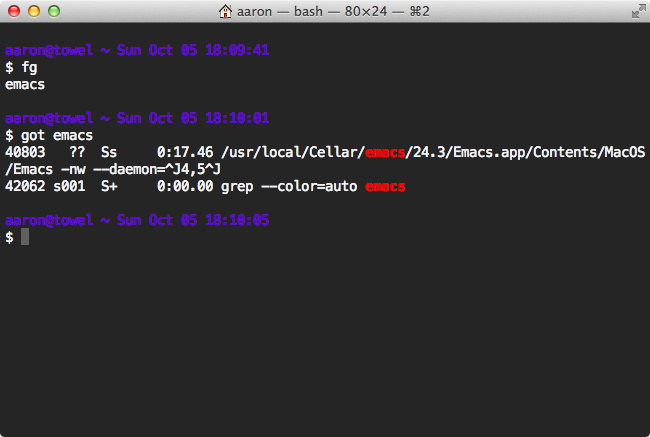
Help > Editor Playground.Īccess all available commands based on your current context.
#Emacs python mode code#
Try out VS Code's code editing features, like multi-cursor editing, IntelliSense, Snippets, Emmet, and many more. If you are looking to improve your code editing skills open the Interactive Editor Playground. As you discover and learn, the walkthroughs track your progress. Pick a Walkthrough for a self-guided tour through the setup steps, features, and deeper customizations that VS Code offers. You will get an overview of VS Code's customizations and features. The best way of exploring VS Code hands-on is to open the Get Started page. Prefer a video? You can watch a recent Microsoft Build talk Visual Studio Code tips and tricks, which describes 20 tips and tricks for working productively with VS Code. You can find platform specific setup instructions at Running VS Code on Linux, macOS, and Windows.
#Emacs python mode download#
If you don't have Visual Studio Code installed, go to the Download page. This topic goes pretty fast and provides a broad overview, so be sure to look at the other in-depth topics in Getting Started and the User Guide to learn more. You'll become familiar with its powerful editing, code intelligence, and source code control features and learn useful keyboard shortcuts.

#Emacs python mode how to#
"Tips and Tricks" lets you jump right in and learn how to be productive with Visual Studio Code.

This is achieved by changing the process sentinel. We want to write the input ring to the file when the interpreter process exits. We can associate with each interpreter a file in which its history will be stored, for example inferior-haskell-history for ghci and inferior-ruby-history for irb, and in the corresponding mode hook we can set the variable comint-input-ring-file-name to the appropriate value and call comint-read-input-ring. The former is easy to achieve: this is what mode hooks are for. We would like Emacs to behave as follows: whenever we run an interpreter, its input ring is read from a file associated with that interpreter and is written to that file when we quit the interpreter. The variable comint-input-ring-file-name is buffer-local, and can be nil, in which case the above functions are no-ops. In particular, the name of the history file is given by the variable comint-input-ring-file-name, and the functions that read/write the input ring are comint-read-input-ring and comint-write-input-ring. Furthermore, comint offers some facilities for reading/writing the input ring from/to a history file. The command history is called an input ring and is stored in the buffer-local variable comint-input-ring. This is very annoying, and below I offer a way to fix it.Įmacs interpreter modes are derived from comint mode.

If you run interactive interpreters (e.g., python, irb, ghci etc.) inside Emacs, you have probably observed that they lose command history between sessions.


 0 kommentar(er)
0 kommentar(er)
